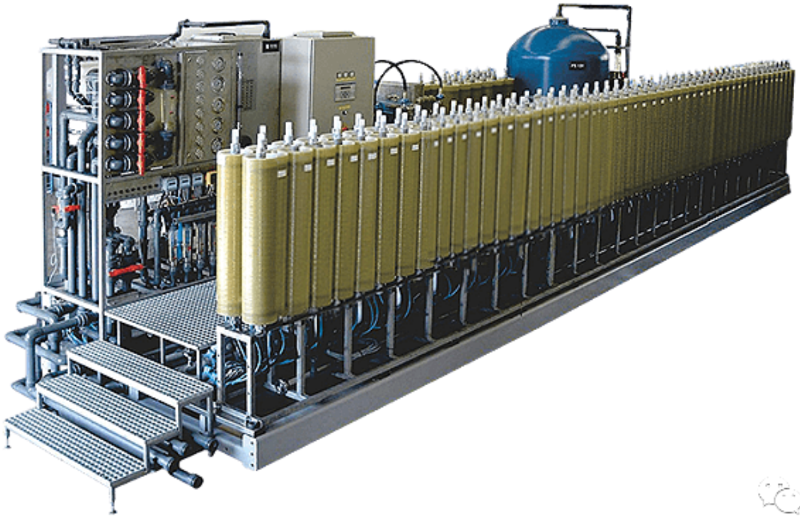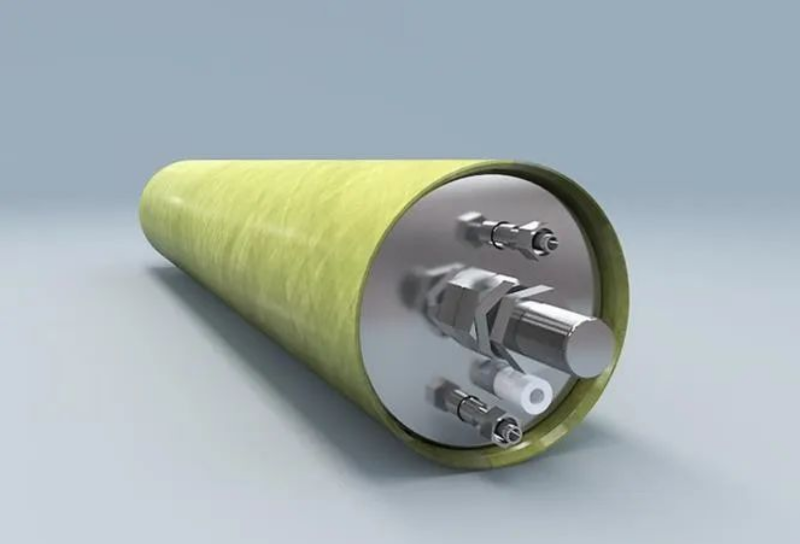(+86)0532-88988868
DT-RO membranes do not require any form of pretreatment, and directly treat the leachate to meet the emission standards required by the owner.
For the treatment of municipal solid waste leachate, if it is to meet the national level emission standards, a two-stage DTRO treatment system is generally provided, including a central control system, a sand filter, a first-stage reverse osmosis system, a second-stage reverse osmosis system, a leachate storage tank, a sulfuric acid storage tank, a water purification tank, a cleaning agent storage tank, a degassing tower, etc.
When the system is running, the leachate is pumped into the sand filter from the conditioning tank, the suspended solids above 50 μm are removed, and then the particles with a particle size greater than 10 μm are removed through the cartridge filter, and then enter the leachate storage tank. In the process of the stock solution entering the storage tank, the acid addition system is started, and the pH value of the leachate in the storage tank is adjusted to 6~6.5.
When the level in the leachate tank reaches the set height, the first stage reverse osmosis system is activated and the leachate is pumped into the membrane group system by a high-pressure plunger pump.
The purified water produced by the first stage of reverse osmosis directly enters the second stage reverse osmosis system, and the concentrated liquid produced is circulated in the membrane pack, and after reaching the set recovery rate, it is discharged to the concentrated liquid storage tank.
After passing through the second-stage reverse osmosis system, the purified water produced is directly discharged or reused after deodorization by the degassing device. Since the concentration of pollutants in the concentrate produced here is not high, it can be discharged to the first stage of reverse osmosis for another treatment to improve the water recovery rate of the system. The cleaning of the membrane stack is performed automatically by the system according to the differential pressure, only by placing acid cleaning agent and alkaline cleaning agent in two cleaning agent tanks.
DT-RO membrane is a form of reverse osmosis, which is specially designed to treat high-concentration sewage membrane module, and its core technology is a disc-tube diaphragm membrane column. The reverse osmosis diaphragm and hydraulic deflector disc are stacked together, fixed with a central tie rod and end plate, and then placed in a pressure-resistant sleeve to form a membrane column.
The core of the DT-RO membrane system is a membrane column consisting of a disc diaphragm, a deflector plate, an O-type rubber gasket, a central tie rod and a pressure-resistant sleeve. There are two types of disc type membrane columns: large membrane column and small membrane column. The small membrane column has a diameter of 200 mm and a length of 1000 mm, with 170 guide discs and 169 diaphragms;
The large membrane column has a diameter of 214 mm and a length of 1400 mm, consisting of 210 deflectors and 209 diaphragms. The diaphragm and the deflector disc are stacked at intervals, and the O-shaped rubber gasket is placed in the groove on both sides of the deflector plate, threaded together with a central tie rod, placed in a pressure-resistant sleeve, and sealed with metal end plates at both ends.

The individual components in the membrane column have different functions. The diaphragm is composed of two concentric annular reverse osmosis membranes, sandwiched with a filamentous bracket in the middle of the membrane, the outer ring of these three annular materials is welded, and the inner ring is opened for the water purification outlet.
The deflector disc (which replaces the mesh support layer in the coiled membrane) clamps the diaphragm in the middle, but does not make direct contact with the diaphragm, widening the fluid channel; There are certain convex points arranged on the surface of the deflector plate, which make the leachate turbulent under high pressure, increase the transmission rate and self-cleaning function.
The O-type rubber washer is placed on the center tie rod and placed in the grooves on both sides of the deflector plate, which plays the role of supporting the diaphragm and isolating sewage and purifying water. The purified water flows along the filamentous bracket in the middle of the diaphragm to the periphery of the central tie rod and is discharged through the purified water outlet.
Compared with other membrane modules, the DT-RO membrane system has the following three distinct features:
Channel width: The channel between the diaphragms is 2mm, while the membrane module of the coil package is only 0.2mm.
Short process: the flow of liquid on the membrane surface is only 7cm, while the membrane module of coil encapsulation is 100cm.
Turbulent epidemic: Due to the action of high pressure, the leachate hits the bumps on the guide plate to form high-speed turbulence, and under the erosion of this turbulence, the membrane surface is not easy to settle pollutants.
In coil-encapsulated modules, mesh brackets trap contaminants, creating a hydrostatic area that contaminates the diaphragm.
The above three characteristics determine that DT-RO reverse osmosis technology can tolerate high suspended solids and SDI when treating leachate, which is not blocked.
At the same time, these three technical characteristics are reflected in the specific practice, so that the disc membrane technology has the following engineering characteristics:
The membrane pack has less fouling, light membrane fouling, and long membrane life. The special structure and hydraulic design of DT-RO make the membrane stack easy to clean, avoid fouling and other membrane contamination, and thus extend the diaphragm life. Diaphragms for DT-RO can have a lifetime of more than 2 years or more.
It does not depend on pretreatment and has good stability, safety and adaptability. Due to the above structural characteristics, DTRO membrane stacks can be directly treated with leachate without pretreatment.
In specific projects, pretreatment systems are optional. For systems with pretreatment, regardless of whether the pretreatment link is efficient and stable, the reverse osmosis system can stably meet the standard water. At the same time, because it does not rely on biological treatment, DT-RO reverse osmosis has good adaptability to leachate at all stages of landfill. It has a very reliable processing effect.
So far, there has been no failure of 243 examples of leachate treatment projects abroad for more than ten years. In the treatment test of DT-RO pilot equipment in more than ten garbage plants in five cities in China, none of the cases were affected by blockage.



